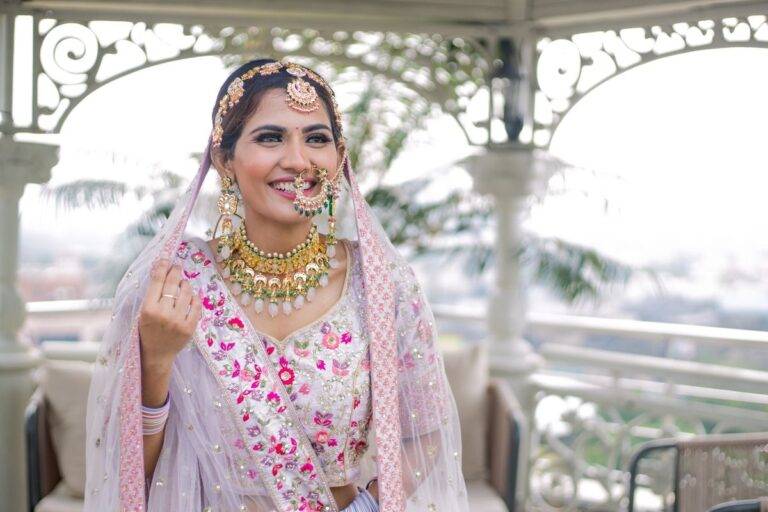
Choosing whether to wear a Ghunghat on your wedding day is a personal decision that can enhance your bridal look. To help you decide, here’s a breakdown of Ghunghat types, lengths, and the latest color trends.
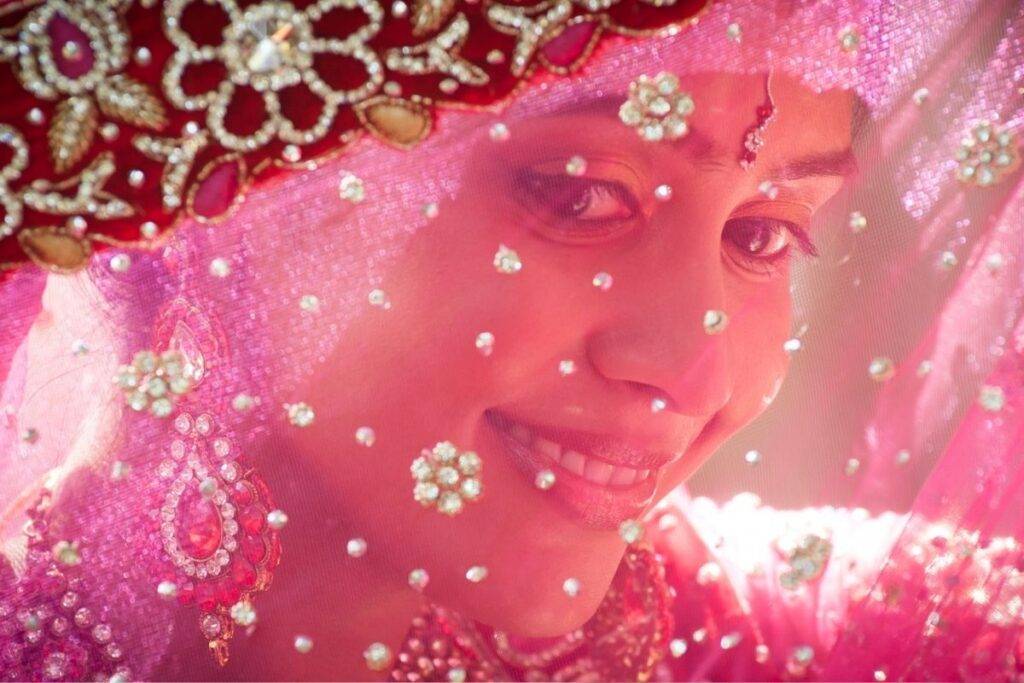
1. Types of Ghunghat
There are several types of veils, each offering a unique look and feel:
- Blusher Ghunghat: A short, single-layer Ghunghat that covers the face and falls to the shoulders.
- Flyaway Ghunghat: A multi-layered Ghunghatthat falls to the shoulders or mid-back, creating a playful, voluminous effect.
- Mantilla Ghunghat: A circular Ghunghat with lace edges, worn over the head for a romantic, vintage look.
- Juliet Cap Ghunghat: A Ghunghat attached to a small cap, giving a vintage or bohemian feel.
- Birdcage Ghunghat: A short Ghunghat made of netting that covers part of the face, ideal for a retro look.
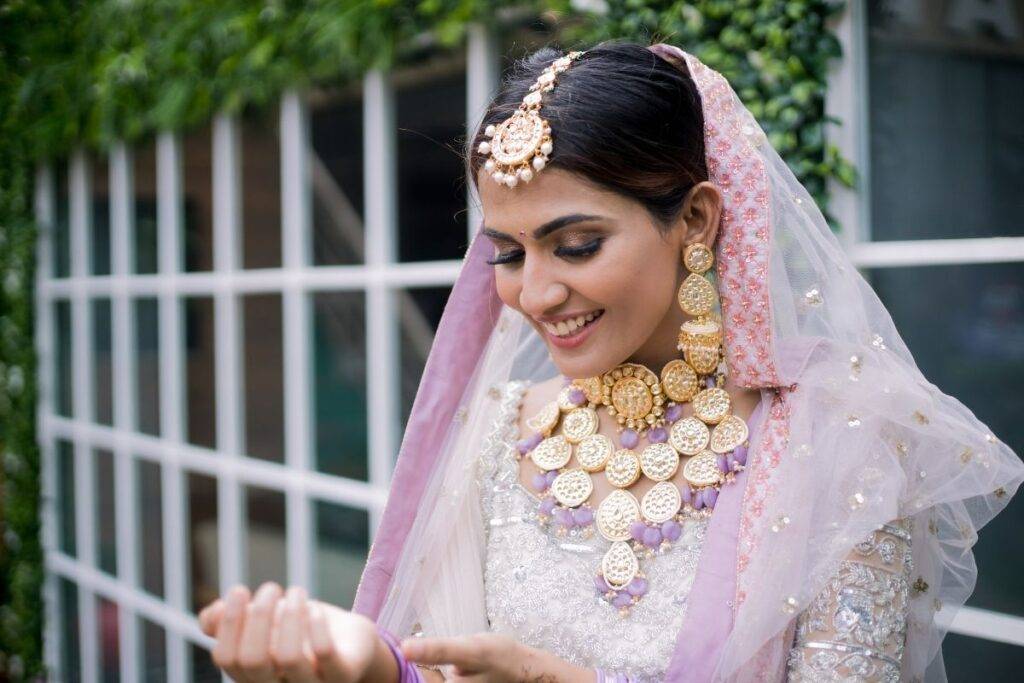
2. Ghunghat Lengths
Veil lengths vary widely, from short and sweet to long and dramatic:
- Birdcage Veil: A very short veil that covers just the eyes or extends to the chin, ideal for a vintage or retro look.
- Shoulder-Length Veil: Reaches the shoulders, offering a simple and understated look.
- Elbow-Length Veil: Falls to the elbows, complementing most dress styles without overwhelming them.
- Fingertip Veil: Extends to the fingertips when your arms are down, offering a classic, versatile look.
- Chapel Veil: Slightly shorter than a cathedral veil, it grazes the floor and adds elegance without the need for a train.
- Cathedral Veil: A long veil that extends beyond the train of your dress, perfect for a grand, dramatic entrance.
- Royal Veil: Extremely long, extending several feet behind the bride, often used for highly formal or royal-themed weddings.
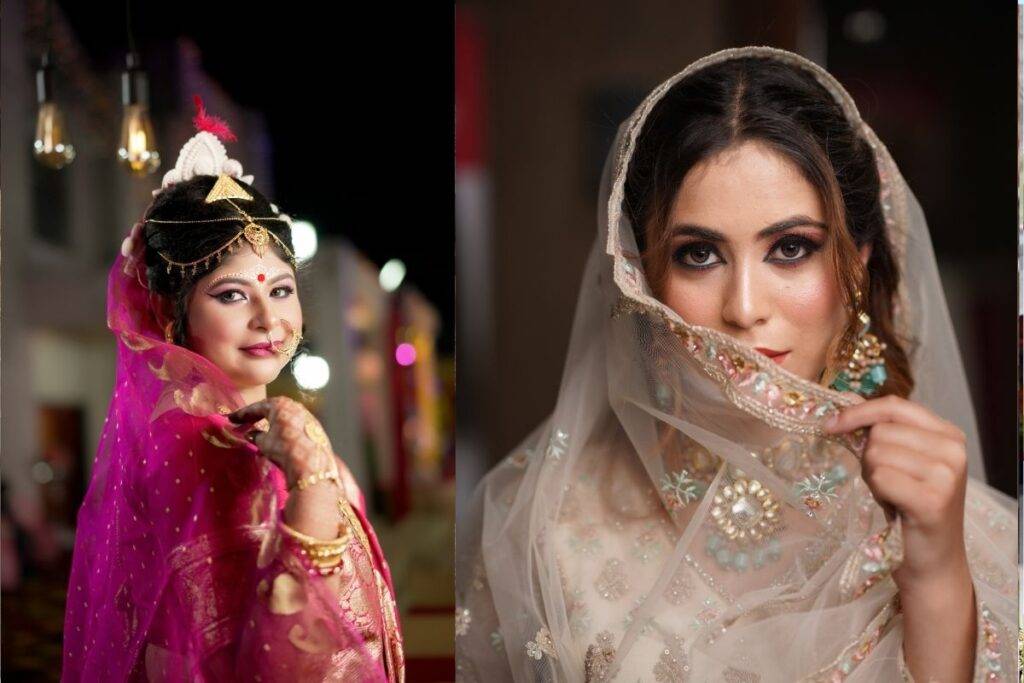
3. Color Trends
Veil colors can range from traditional to trendy:
- Classic White or Ivory: Timeless choices that match most wedding dresses.
- Blush or Champagne: Subtle, warm tones that add a touch of color without overpowering your look.
- Colored Veils: Bold colors like blue, pink, or even black can make a striking statement and reflect your personal style.
- Ombre Veils: Featuring a gradient effect from one color to another, adding a modern twist to your bridal look.
- Embellished Veils: Veils with beading, embroidery, or lace appliques can add a touch of glamour and match the detailing on your dress.
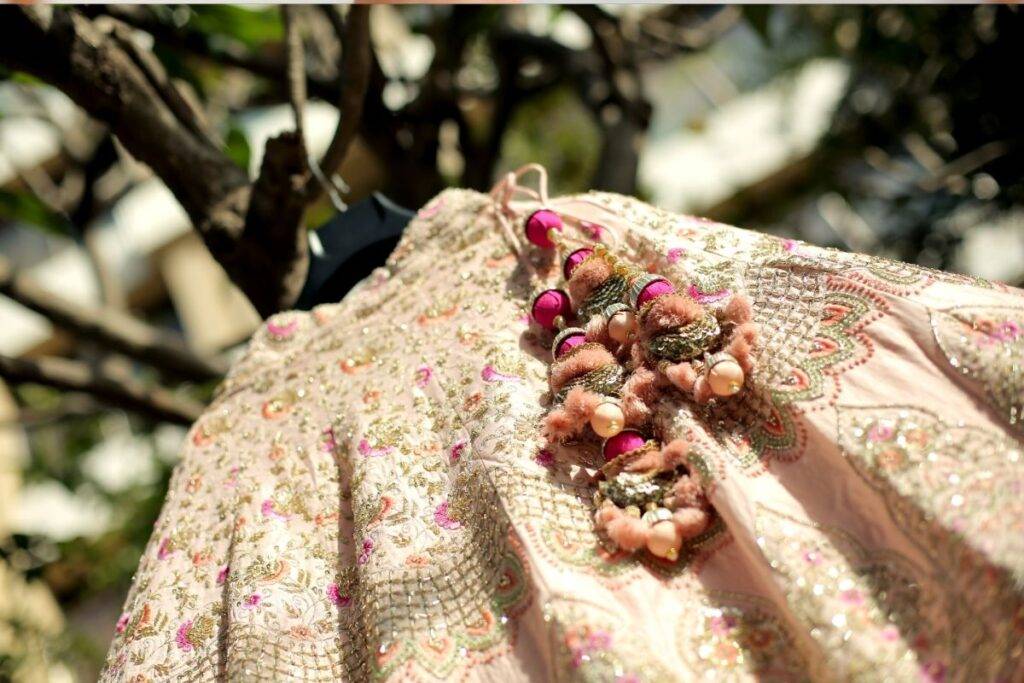
4. Consider Your Dress
The style of your wedding dress plays a significant role in choosing the right veil:
- Simple Dresses: Pair well with more elaborate veils that add a touch of elegance.
- Detailed Dresses: Look best with simpler veils that do not compete with the dress’s embellishments.
- Backless Dresses: Highlight the back of the dress with a sheer or minimalist veil.
- Ball Gowns: Can handle dramatic veils like cathedral or chapel lengths.
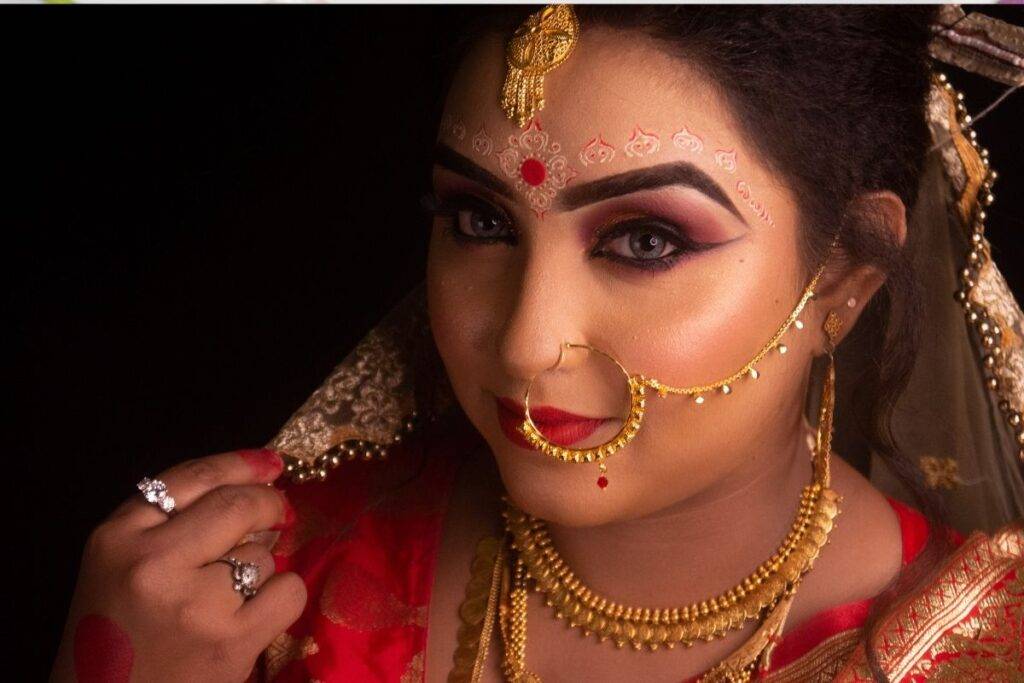
5. Practical Considerations
Keep these practical tips in mind when choosing a veil:
- Comfort: Ensure the veil is lightweight and comfortable to wear throughout the ceremony and reception.
- Attachment: Decide how the veil will attach to your hair (combs, pins, or headbands) and make sure it’s secure.
- Portability: Consider how easy it is to move around and dance with your veil on, especially if it’s long.
- Removal: Plan when and how you’ll remove the veil after the ceremony, if needed.
Final Thoughts
Deciding to wear a veil and choosing the right one can significantly impact your bridal look. By understanding the different types, lengths, and color trends, you can select a veil that perfectly complements your wedding dress and personal style. Whether you opt for a veil or not, the most important thing is to feel beautiful and confident on your special day.
- How to Choose the Perfect Bridal Lehenga: Tips from Experts
- Bridal Accessories to Elevate Your Wedding Day Look: Trends and Tips
